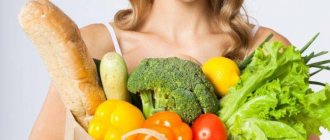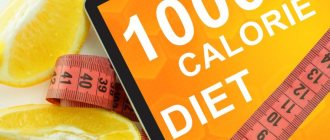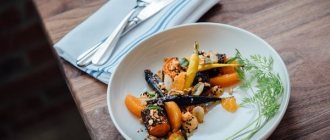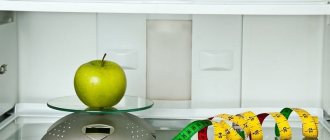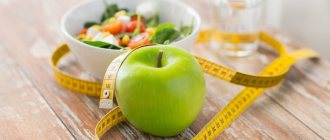Lose weight up to 4 kg in 7 days. The average daily calorie content is 700 Kcal.
The lion's share of modern popular dietary techniques is based on a sharp reduction in calorie intake. The 700 calorie diet is one of them. While following this technique, you need to “eat” exactly that many energy units every day. It is recommended to eat this way for no more than three weeks; after this period, you should gradually increase your daily caloric intake. If you need to lose a small amount of kilograms, you can spend less time on a low-calorie diet. As a rule, in a week on a “700 calorie” diet you lose 3 kilograms of excess weight.
Diet “700 calories”, 7 days, -4 kg
Lose weight up to 4 kg in 7 days.
The average daily calorie content is 700 Kcal. The lion's share of modern popular dietary techniques is based on a sharp reduction in caloric intake. The 700 calorie diet is one of them. While following this technique, you need to “eat” exactly that many energy units every day. It is recommended to eat this way for no more than three weeks; after this period, you should gradually increase your daily caloric intake. If you need to lose a small amount of kilograms, you can spend less time on a low-calorie diet. As a rule, in a week on a “700 calorie” diet you lose 3 kilograms of excess weight.
700 calorie diet requirements
The menu of the low-calorie “700 calorie” diet should be dominated by protein foods. They are the ones who saturate the body as well as possible and ensure the speed of metabolic processes. Thanks to protein foods, weight loss occurs due to the burning of fat cells, and muscle mass does not suffer. It is very important. The diet should be based on lean meat and fish, seafood, low-fat milk and sour milk.
It is recommended to exclude (or at least minimize) simple carbohydrates (confectionery; any dishes and drinks that contain sugar and flour). If you live very sadly without flour delicacies, then you can leave a small amount of bran or wheat bread, but do not eat more than 100 g of it per day. As for sweet cravings, you can relieve them with honey and dried fruits. Eat all the most high-calorie foods in the first half of the day, and make dinner as light as possible.
During the “700 calorie” diet, it is advisable to reduce the amount of salt consumed and completely eliminate alcoholic drinks.
Small meals at least 4-5 times a day are held in high esteem. This will make it easier to avoid acute attacks of hunger and, as a result, breaking the diet.
In addition to protein products, you need to include the right carbohydrates (cereals, vegetables, fruits) and healthy fats (non-heat-treated vegetable oils, seeds, various nuts) into your diet. To ensure that the results of your dietary efforts are as noticeable as possible, do not have dinner after 7 p.m.
During the 700 calorie diet, it is best to eat at home, preparing your own meals. After all, in a cafe or at a party it is difficult to calculate calorie content, which is why you can easily overeat. Therefore, it is better to plan a diet for a period free from holidays and events outside the home.
TOP 5 most high-calorie breakfasts
Low-calorie foods are popular only among those who are trying to get rid of extra pounds, or are trying to stick to a diet due to doctor’s recommendations.
But there are others too! Those who do not pay attention to restrictions, and even vice versa, try to gain the missing body weight. If you are one of them, you have come to the right place. How to prepare the most high-calorie oatmeal, omelet, smoothies and breakfast for five daily calorie requirements, read in this article. No matter what your goals are: gain energy for the whole day in one meal, gain weight, or simply treat yourself to something tasty and nutritious, one of these breakfasts will surely be to your liking! Well, very nutritious oatmeal! In general, among porridges, millet is considered the most high-calorie, and oatmeal itself is a dietary product. But only a few use it in its fasting form. Of course, it’s much tastier to use milk instead of water, but how can you do without dried fruits and other goodies... From here, let’s start in more detail: what kind of products can turn even such a low-calorie dish as oatmeal into a mega-nutritious breakfast? Let's get started: pine nuts or macadamia nuts (+ 718 kcal per 100 g), dates (270 kcal per 100 g), dried bananas (+ 390 kcal per 100 g), milk chocolate (+ 500 kcal per 100 g), and for dressing – sugar (+ 35 kcal in one spoon) and butter (+876 kcal per 100 g). Your oatmeal, sir!
Morning smoothie A smoothie here, a smoothie there... This product has really become very popular lately. Most smoothies do not spoil your figure, because their calorie content does not exceed 200 kcal. But we are interested in one of the highest calorie smoothies, which is ideal for a hearty breakfast. And here, in fact, is his recipe: two mashed bananas (89 kcal per 100 g), a tablespoon of peanut butter (899 kcal per 100 g), a cup of natural whole milk 3.2 - 5.5% fat (70-80 kcal per 100 g), whipped cream and ice cream for decoration. Well, such a drink is certainly not suitable for a diet, but it is more than possible to eat well with it.
The most high-calorie omelet Who would have thought, but chicken eggs are quite a high-calorie product. Four medium eggs are 300 kcal, and if you add pieces of fried bacon (540 kcal per 100 g) or lard (797 kcal per 100 g), hard cheese (403 kcal per 100 g) to the omelette and fry it all in unrefined olive oil ( 824 kcal per 100 g), soybean oil (884 kcal per 100 g) or even regular sunflower oil (890 kcal) will give you the daily calorie requirement for an adult. But it's just breakfast! Bruschettas with coconut oil In order to forget about hunger for a long time, prepare bruschettas for breakfast. This is the fastest and easiest way to provide yourself with energy, because preparing them is very simple! Bruschettas with salmon (200 kcal per 100 g), feta (264 kcal per 100 g) and avocado (245 kcal per 100 g), as well as feta cheese (260 kcal per 100 g) are considered one of the most nutritious. As a base, you can take slices of wheat bread (290 kcal per 100 g), fried in edible coconut oil (925 kcal per 100 g). Having prepared all four types for breakfast, you can eat to your heart's content. But, to prevent obesity, it is better to share a couple with someone.
English breakfast “Hibernating” Back in 2014, the Bear Grill restaurant opened in Northern England, which offers its visitors one of the most high-calorie breakfasts in the world, the energy value of which is eight thousand (!) calories. We are talking about an exclusive item on the restaurant’s menu - a breakfast called Hibernator (translated as “Hibernating”). You can prepare it at home, having previously “packed” with a decent amount of ingredients. After all, it consists of four scrambled eggs, eight slices of fried bacon, the same number of sausages and potato zrazes, an omelet with cheese, four waffles and fried bread, plus four pieces of blood. Oh yes, also beans, tomatoes, mushrooms, French fries and a huge milkshake. If you want to gobble it all up in a restaurant, in addition to paying the check, you will have to write a receipt that in case of health problems you will blame solely your feeling of hunger, and not the cooks and owners!
Example of a 700 calorie diet for a week
Day 1
Breakfast: 2 eggs, boiled or cooked in a dry frying pan; Tea coffee. Second breakfast: grapefruit. Lunch: boiled or steamed beef (200 g). Afternoon snack: 2 cucumbers or tomatoes. Dinner: salad of two fresh or boiled carrots.
Day 2
Breakfast: 100 g of oatmeal, cooked in water (weight is calculated in finished form); Tea coffee. Second breakfast: 100 g baked potatoes and cucumber. Lunch: 300 g of any non-starchy vegetables, stewed. Afternoon snack: half a boiled chicken egg; small sweet bell pepper; tea. Dinner: low-fat kefir (up to 250 ml).
Day 3
Breakfast: 100 g of buckwheat porridge cooked in water; Tea coffee. Second breakfast: half a baked or boiled potato and 50 g of sauerkraut. Lunch: 250 g of stewed vegetables (mix of eggplants, tomatoes, cauliflower); up to 100 g of boiled skinless chicken breast. Afternoon snack: 1 bell pepper. Dinner: half a boiled chicken egg; green tea with ginger.
Day 4
Breakfast: 2 tbsp. l. buckwheat porridge; tea. Second breakfast: 100 g of low-fat kefir with half a small apple and cinnamon; Tea coffee. Lunch: soup of 10 g of hard pasta, 80 g of honey mushrooms or other mushrooms, 20 g of carrots and 30 g of onions. Afternoon snack: 50 g each of boiled asparagus and cauliflower. Dinner: cod (up to 130 g) and tea.
Day 5
Breakfast: 2 boiled eggs; coffee Tea. Second breakfast: salad of medium tomato and various greens. Lunch: 200 g of boiled veal or chicken; tea. Afternoon snack: cucumber. Dinner: up to 200 g of spinach, stewed.
Day 6
Breakfast: orange; Tea coffee. Second breakfast: 2 grated carrots. Lunch: 100 g of vegetable soup and the same amount of boiled chicken fillet. Afternoon snack: apple. Dinner: grapefruit and green tea.
Day 7
Breakfast: a couple of tablespoons of cucumber salad, greens and white cabbage; Tea coffee. Second breakfast: grapefruit. Lunch: boiled chicken egg and a cup of tea. Afternoon snack: about 200 g of low-fat cottage cheese. Dinner: stewed spinach (200 g).
Daily menu for 700 calories
For beginners, it will be useful to use ready-made menu options. The advantage of a calorie-counting diet is that you can eat any food, limiting its quantity.
Option No. 1 (carbohydrates and protein predominate)
Breakfast (173 kcal):
- Cottage cheese 1.8% – 100 g;
- Honey – 1 tbsp. l.;
- Tea/coffee with milk – 240 ml.

Honey
Lunch (383 kcal):
- Boiled chicken breast – 150 g;
- Lentils (dry) – 50 g;
- Tea/coffee without milk and sugar.
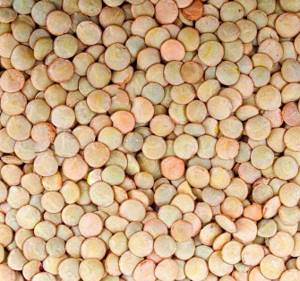
Lentils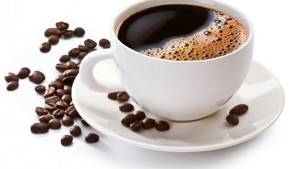
Dinner (140 kcal):
- Vegetable salad – serving (medium cucumber, tomato, ½ large pepper, 3 large radishes);
- Kefir 0% fat - 200 g.

Option No. 2 (protein predominates)
Breakfast (200 kcal):
- Scrambled eggs without oil – serving (2 eggs);
- Tomato – portion (medium);
- Cheese 15% fat – 20 g;
- Tea/coffee without milk and sugar.

Tomato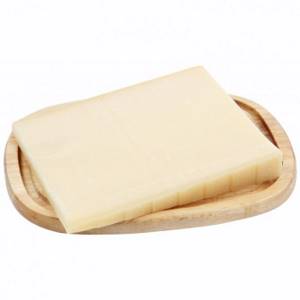
Lunch (257 kcal):
- Green beans – 100 g;
- Chicken breast baked with spices – 100 g;
- White cheese 15% fat – 30 g;
- Tea/coffee without milk and sugar.
Dinner (242 kcal):
- Cottage cheese 1.8% fat – 100 g;
- Hazelnuts – 20 g;
- Tea/coffee without milk and sugar.
Advantages of the diet
- One of the main advantages of the 700 calorie diet is that you are free in your food choices. There is no strict list of allowed foods that you need to adhere to.
- It’s also good that you don’t need to give up food altogether or constantly eat the same thing (as happens with mono-diets).
- A significant advantage of a low-calorie diet is the fairly rapid loss of extra pounds in a short time.
- You can eat deliciously and variedly, according to your taste preferences, and at the same time lose weight.
Daily norm of kilocalories

There is no single number of kilocalories a person needs every day. Men will need more energy than women, and children and teenagers sometimes need more energy than adults. Usually the body itself tells you when its reserves are running low and a person experiences hunger. An excess of kilocalories leads to weight gain, a lack of calories leads to weight loss.
See the same topic: One of the effective ways to lose weight is the egg diet
To calculate the approximate norm, there are many formulas and calorie counters. The amount of energy spent depends on gender, age, height, weight, lifestyle and other factors that are rarely taken into account due to the difficulty of calculation. These include the percentage of fat and water in the body, bone and muscle mass.
The best known are the Harris-Benedict and Muffin-Jeor formulas. For both, the basal metabolic rate (BMR) is first calculated and then multiplied by the activity coefficient.
Basic metabolism (BME) is the energy used by the body for its maintenance, i.e. the functioning of organs, blinking, breathing, etc. It is also not surprising that less energy is spent during sleep than during wakefulness.
For people leading an active lifestyle, the Harris-Benedict formula is valid. For people who prefer a passive lifestyle, it is better to use the Muffin-Jeor formula. It most accurately calculates the energy expenditure of a body at rest.
When choosing a coefficient, it is worth taking into account the work, whether it is sedentary or involves heavy physical labor. It is important to be objective and remember that the above formulas are intended for people over 18 years of age.
The final number, no matter what formula it is obtained from, is an approximate norm for maintaining body weight. To lose weight you need to subtract 10-20%, to gain weight you need to add the same amount. It is also advisable to consider the ratio of proteins, fats and carbohydrates, based on your needs and goals. So, the norm is an approximate equality of all three, for weight loss - the predominance of proteins, for gain - an increase in carbohydrates.
Disadvantages of the 700 Calorie Diet
- To survive the entire marathon diet, you will need considerable self-control.
- You should always consider the energy value of the food you eat. It is unlikely that you will be able to do without calorie tables, especially at the beginning of a diet. It would be advisable to stock up on kitchen scales for the most accurate calculation of weight and, accordingly, caloric intake.
- Small meals can also be a difficulty for busy people, because sometimes there is simply no time to have a snack at the right time and with the right foods.
- We also note that many nutritionists are against the “700 calorie” diet, since the energy content of its diet is too low. Due to the lack of energy entering the body, people on this diet may feel malaise, weakness and other unpleasant symptoms.
- If you do not plan your menu correctly and include a lot of sweets and baked goods by cutting back on necessary food, you may face hunger and a lack of nutrients necessary for the normal functioning of the body.
- Metabolic disturbances may also occur. At the same time, you will probably lose weight, because your diet is low in calories, but, alas, you can undermine your health.
- Let us draw your attention to another side effect of low-calorie diets, which is not talked about so often. When a small amount of calories enters the body (especially if this lasts for quite a long time), bile is released in a larger volume than usual. So be careful!
- If you decide to lose weight on such a strict diet, weigh the pros and cons. Such an extreme diet is stressful for the body. Soberly assess the state of your health, your willingness to follow all the rules of the method and take a responsible approach to choosing food.
- You need to exit such a low-calorie method very smoothly.
700 kcal per day diet

The essence of diet for 700 kcal
The essence of this diet is extremely simple and consists in choosing the most acceptable daily caloric content of your diet. The figure from which we will proceed is 700. However, this does not mean that every day you will eat food whose energy value is equal to seven hundred calories. In order to apply such a diet, you will need to make a simple calculation that will provide you with 100% results and gradual weight loss (from 0.5 to 1 kilogram per day).
Why does fractional nutrition help?
If you intend to lose weight, you must learn to eat food often and in small portions. This will help avoid the feeling of hunger, in the presence of which everyone simply pounces on food and can even consume two daily calories. The currently popular fractional nutrition is simply a distribution of meals throughout the day in such a way as not to feel hungry, in other words, to prevent a decrease in blood sugar. Try to eat often, but so that the total amount of food per day does not increase. If you begin to feel hungry between breakfast and lunch, or between lunch and dinner, eat garden fruits or dairy products, only at the same time reduce the amount of food between lunch and dinner. The main thing for losing weight is not to eat at night or at least have something light to eat.
There are other variations. For example, reduce the calorie content of food (choose appropriate recipes), but increase the quantity. You will begin to eat more, and it will seem to you as if hunger is not present.
You can also choose foods that give you a feeling of fullness: boiled eggs and bananas.
Avoid eating jam, granulated sugar, chocolate, sweets, honey - such foods are instantly digested, and the feeling of hunger does not go away.
List of foods for a 700 kcal diet
Here's a list of foods that won't do you any harm if you still can't give up snacking:
- low-fat cheese (Suluguni, Adyghe, feta cheese);
- tangerines;
- fresh carrots;
- tomatoes;
- radish;
- raspberries or strawberries.
700 calorie menu for day No. 1
For breakfast: 100 grams of oatmeal, boiled in water, one cup of weak black tea.
For second breakfast:
- 100 grams of baked potatoes,
- pickled cucumber.
For lunch: 300 grams of stewed vegetables (eggplant, cauliflower, garlic, tomatoes).
- 100 grams of red sweet pepper,
- ½ part chicken egg,
- one cup of green tea.
For dinner: one glass of low-fat kefir.
700 calorie menu for day No. 2
- 100 grams of buckwheat porridge, boiled in water,
- a cup of weak black tea.
For second breakfast:
- 50 grams of baked potatoes,
- 50 grams of sauerkraut.
- 250 grams of vegetables prepared by stewing (eggplant, cauliflower, garlic, tomatoes),
- 100 grams of boiled chicken breast.
- 100 grams of red sweet pepper,
- ½ part of a chicken egg, boiled until hard,
- one cup of green tea.
For dinner: green tea with the addition of ginger.
Menu 700 calories for day No. 3
- For breakfast: buckwheat porridge – 20 grams + semolina porridge – 10 grams + green tea.
- For breakfast No. 2: cottage cheese - 100 grams + coffee.
- For a snack: ½ part of an apple (80 grams).
- For lunch: mushroom soup (honey mushrooms 80 grams + pasta 10 grams + carrots 20 grams + onions 30 grams) + tea.
- For a snack: asparagus + cauliflower (50 grams each).
- For dinner: cod - 130 grams + tea.
- In the evening, prunes + coffee.
An example of calculating calories in cereals
One tablespoon of oatmeal contains approximately 12 grams, calculate the total calorie content like this:
- 3 tbsp. x 12 grams = 36 grams
- 355 kilocalories x 0.36 = 128 kilocalories in one serving of prepared porridge.
If you cook it with milk, add granulated sugar or raisins, you also add all this into the calculation.
Article on the topic: How a high-calorie breakfast fights excess weight

Regardless of what goal you have set for yourself: losing weight or just being a healthy person, what you eat is a decisive factor for success! Properly selected food not only improves your waistline, but also provides you with energy, improves your mood and protects against disease.
And now - news! Tel Aviv University scientists have found that what you eat for breakfast is less important than when you eat it. Our metabolism is decisively influenced by the body's circadian rhythm - a biological process that our body follows 24 hours a day.
The timing of meals very seriously affects how our body disposes of the food it receives, says Daniela Jakubovich, a professor at the Faculty of Medicine in the Diabetes Department of the Wolfson Center. Recent studies have shown that those who recognize breakfast as the most significant meal of the day and eat heavily at breakfast lose weight and inches around their waist much faster than those who eat a lot at dinner.
“Well, God bless her, with her waist!” - many will object. Just think! However, it's not all about kilograms and centimeters. Study participants who ate a large breakfast (which also included a dessert of a piece of chocolate cake or cookies) had significantly lower levels of insulin, glucose and triglycerides throughout the day, which significantly reduces the risk of cardiovascular problems, diabetes, hypertension and high blood pressure. blood cholesterol levels.
The findings, recently published in the Journal of Obesity, show that timing your meals controls your metabolism and overall lifestyle. The 12-week study involved 93 people who were divided into two groups: The first group consumed 700 calories for breakfast, 500 for lunch and 200 for dinner. Another group: 200 for breakfast, 500 for lunch and 700 for dinner. Breakfast for one group and dinner for another are the same products.
At the end of the study, participants in the Great Breakfast group had lost an average of 8kg each and 7.5cm from their waist. Participants in the second group, who ate a great dinner, lost 3 kg and 3.5 cm from their waist. Let's not forget that both of them limited the total amount they eat per day and achieved results. However, the effectiveness of limiting the number of calories consumed per day in these groups was completely different!
Very important: Professor Jakubovich's study identified low levels of the hormone that regulates hunger in the first group of participants, which means that the participants were more satisfied and did not seek out snacks during the day, which was noticeably different from the participants in the second group. The level of triglycerides (these are salts of fatty acids that clog our blood vessels) in the blood of participants in the second group was always very high.
This study strongly recommends an improved diet, coupled with nutritious foods and regular exercise. Even if you eat the right food at the wrong time, you may not only fail to achieve weight loss, but also harm yourself.
Let's stop late night snacking! Chewing endlessly in front of the TV or computer, especially in the very evening hours, is a huge contribution to the obesity epidemic. And the point here is not so much the extra pounds, but the level of triglycerides, which is not at all good for the heart muscle.
Practice:
What is a breakfast containing 700 kcal? This is a big filling breakfast. An omelette or just 2 eggs with cheese, a slice of pie and a fruit salad is 400 calories. Or, two eggs scrambled and oatmeal. This is also 400 calories. We add the remaining calories to taste! A little cottage cheese with berries - 100 calories, yogurt - 150 calories, a glass of orange juice - 100 calories.
What is a dinner containing 200 kcal? A great option is a smoothie (orange, strawberry, banana, maybe yogurt) or a cup of cottage cheese with berries and granola. A serving of Barbarum granola is 120-180 calories.
700 calorie per day diet
A diet of 700 calories a day is a universal way to lose weight without starving or driving yourself into debilitating weight struggles. For many of us, one word “diet” already means stress with starvation and dizziness. We are ready to exhaust ourselves to the limit to lose those extra pounds. But by eating only 700 calories a day, we can easily lose weight by counting the calorie content of the food we eat.

The essence of the diet
The main part of dietary nutrition is based on a sharp reduction in the amount of calories consumed, for example, the average diet is 2-2.5 thousand calories, and the diet is limited to 1-1.3 thousand calories. As a result, the body quickly loses weight and water, but as soon as a person stops losing weight, he gains it again, gaining another 2–3 kilograms plus. But a slight reduction in calories (to 1500–1800 calories) is enough for weight loss.

The first thing you need to do to calculate the required amount of calories is to take into account your lifestyle.
After all, fragile dancers and athletes spend up to 5 thousand calories, but do not gain weight. Therefore, in order to lose weight, people involved in sports are recommended to consume 1.5–1.8 thousand calories per day for weight loss, and for those who move little, it is recommended to reduce this norm to 1200 calories.
There are many online calculators to calculate not only the calorie content of a prepared dish, but also its content of nutrients, vitamins, carbohydrates, fats and proteins. Nutritionists recommend that for diets based on calculating calorie content, menus should be drawn up 7 days in advance.
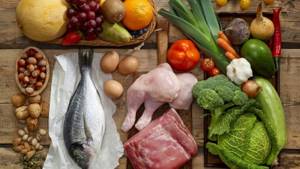
The essence of the diet: calorie counting, that is, food intake per day should be no more than 700 calories, and the number of calories you need for weight loss per day is calculated independently.
The daily intake varies from 700–900 calories, depending on energy consumption. Correct calculation ensures weight loss from 500 grams to 1 kg per day. You should eat often; such a protein diet will help speed up metabolic processes, prevent hunger from debilitating a person who is losing weight, and prevent a sharp drop in blood sugar. Remember that eating smaller meals does not mean eating a lot and consuming an increased amount of calories.
When hungry, it is recommended to snack on low-fat dairy products, vegetables, and fruits. You should not eat at night, and if you are very hungry, lighten the calorie content of snacks as much as possible.
What are calories?
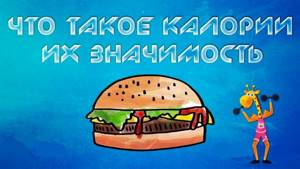
Joules and calories are units of energy familiar to everyone from physics lessons. 1 calorie = 4 J. Living beings obtain this energy from food through biological processes. Both mammals, including humans, need a lot of energy to live, so it is easier to measure it in kilocalories (1 kcal = 1000 cal). True, for convenience, the prefix kilo- is usually neglected.
In addition to energy, food has nutritional value - its content of proteins, fats and carbohydrates. It depends on them how much energy a person gets from food and how to use it. Proteins are an important building material from which muscles are built. They are more difficult to oxidize into energy, as a result of which the body uses them only in critical cases.
The main source of energy is carbohydrates. They are stored in the liver in the form of glycogen, the amount of which is always approximately the same. When a person expends energy, glycogen is released into the blood, turning into glucose. When food rich in carbohydrates arrives, the body replenishes its reserves. Fats form subcutaneous tissue that regulates body temperature. If glycogen reserves are depleted, the body converts fats into energy. This process is the basis of all low-carb diets.
Grocery list
The emphasis is on low-calorie foods, the amount of which in the diet is increased without compromising weight loss. These are: all vegetables except potatoes and green peas, fruits, low-fat yogurt, kefir, kelp, low-fat fish (for example, pike perch, flounder, carp), mushrooms, offal. Low-fat cheese, oranges and tangerines, grated carrots, tomatoes, radishes, and berries are used as snacks.
The most dietary meats are rabbit, turkey, chicken, and beef. To diversify the menu, horse meat is used. Protein foods that are allowed to eat are eggs, and occasionally bananas, rich in potassium, are included in the diet.
Try not to include butter, margarine, cooking oils, baked goods and bread, all types of cereals and nuts in your menu. For fruits, pass by bananas, grapes, dates. You should not eat rose hips, all types of jam, sugar, honey, chocolate. They quickly release energy, raising blood sugar levels, but do not provide satiety and whet the appetite, while being high in calories.
Menu for every day
The 700 calorie per day diet has a variety of dishes, so it’s easy to develop a menu for it. For example, it could be like this:
The first day
- We have breakfast with half a glass of oatmeal. We cook it in water; it is recommended to drink this porridge with unsweetened tea.
- The second breakfast on the first day consists of one boiled potato with pickled cucumber.
- We have lunch with vegetable stew, and have an afternoon snack with half a bell pepper, half a chicken egg and unsweetened green tea.
- We have a glass of kefir for dinner so as not to go beyond the recommended caloric intake for the day.
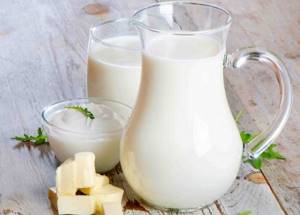
Second day
- We have breakfast with one hundred grams of boiled buckwheat without salt and wash it down with a glass of weak black tea,
- For second breakfast we eat half a boiled potato and two tablespoons of sauerkraut.
- We have lunch with a glass of vegetables stewed without vegetable oil and a piece of boiled chicken.
- We have an afternoon snack with half a green bell pepper, half a boiled egg, and wash down the afternoon snack with green tea without sugar.
- Instead of dinner, we drink green tea with the addition of grated ginger.
Day three
- We have breakfast with 100 grams of boiled buckwheat (50 grams of semolina porridge) and drink green tea.
- The second breakfast consists of cottage cheese and weak coffee without sugar.
- It is recommended to have half an apple as a snack between meals.
- We have lunch with mushroom noodle soup. For cooking, take 85 grams of mushrooms, preferably honey mushrooms; 30 grams of carrots, 20 grams of white onions and 15 grams of pasta. We wash down lunch with weak tea without sugar.
- We have a snack of stewed asparagus with cauliflower (yield – 100 grams).
- We have dinner with a piece of baked cod and tea.
- In the evening we have a snack 2 sh. prunes and drink coffee without sugar.
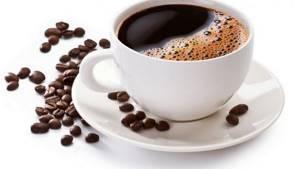
Sample menu for the week
You can prepare different dishes from permitted products. The menu for the week may look like this.
Monday:
- in the morning - 150 g of oatmeal, steamed in water, a mug of unsweetened green tea;
- snack - a small pickled cucumber and 1 boiled potato;
- lunch - 50 g chicken fillet, 150 g stewed vegetables;
- before dinner - 100 fresh vegetable salad;
- dinner - a glass of kefir and 1 fruit (apple, orange).
Tuesday:
- breakfast - 50 g semolina porridge with milk;
- snack - a small apple, 100 g low-fat cottage cheese;
- lunch - 200 ml of soup with vegetables, noodles and mushrooms;
- afternoon snack - 100 g each of steamed cauliflower and asparagus;
- in the evening - 2 prunes, 100 g of baked fish fillet.
Wednesday:
- in the morning - 100 g of buckwheat without oil and other additives;
- lunch - 1 small boiled jacket potato, 40 g sauerkraut;
- for lunch - stewed vegetables (carrots, zucchini, eggplant, onions and greens), 50 g of boiled turkey breast;
- afternoon snack - 1 boiled egg, vegetable salad;
- 2-3 hours before bedtime - 20 g of nuts, green tea with ginger.
Thursday:
- breakfast - 2 boiled eggs;
- snack - 1 grapefruit;
- for lunch - 200 g of baked beef, 2 large spoons of vegetable salad;
- snack - 2 tomatoes and a little grated cheese;
- dinner - 150 g of apple salad and fresh grated carrots.
Friday:
- in the morning - 2 tbsp. l. buckwheat;
- lunch - ½ small apple, ½ glass of kefir with a pinch of cinnamon;
- lunch - creamy cauliflower soup with pieces of dried bread;
- snack - 2 small cucumbers;
- before bedtime - 100 g of baked or steamed cod.
Saturday:
- in the morning - 1 orange;
- second breakfast - fresh cabbage salad;
- lunch - 100 g of boiled chicken fillet, 100 ml of vegetable soup;
- afternoon snack - apple;
- before bedtime - 1 grapefruit.
Sunday:
- breakfast - salad of grated apple and carrots;
- snack - dried bread with cottage cheese;
- lunch - grilled beef sausages, a spoonful of fresh cabbage salad, 50 g of noodles;
- afternoon snack - 200 ml Greek yogurt;
- before bed - dried fruits (1 ring of dried pineapple).
To consolidate the result, you need to exit the diet correctly. It is not recommended to immediately return to your usual diet - it is better to increase your daily caloric intake by 50-100 every day.
Recipes for every day
Chicken with orange
Wash the chicken fillet, salt and rub with pepper. We cut it on the side with a knife to make a pocket. A slice of orange fits into it. Wrap the chicken fillet in foil and bake in the oven at 180 degrees for 30 minutes.
Vegetable Salad
We wash 100 grams of green salad, cucumbers (10 grams) and one radish under running water. We tear the salad with our hands and cut the remaining ingredients into slices. Salt, sprinkle with herbs and add a spoonful of low-fat yogurt.

Baked pike perch
Take 150 grams of fish, cut into pieces, salt and rub with pepper. Pour a little vegetable oil into the frying pan and place the fish. Place slices of onion and feta cheese on top of it, sprinkle with lemon juice and bake for forty minutes.
Diet 300 calories per day. 1300 calorie diets with recipes
A simple menu for a given amount of calories, very comfortable and convenient, you won’t have to go hungry.
The advantages include:
- Accelerated metabolism;
- Improvement of skin;
- The condition of hair and nails noticeably improves;
- Increased tone, improved well-being;
- The appearance of lightness.
Minuses:
- Feeling hungry in the first days;
- Fast fatiguability;
- Dizziness;
- Fainting.
With prolonged use of a diet for such a number of calories, there is a decline in efficiency, as well as a decrease in metabolism.
Weekly menu with simple ingredients
All recipes are very simple, prepared from available products.
Day 1 - 1314 kcal. (BZHU - 78/31/180)

7.30 – 220 g of oatmeal, prepared with low-fat milk, with the addition of 60 g of fresh berries. Walnut - 10 g. Black coffee or unsweetened tea.
11.30 – green apple – 170 g.
14.30 – 120 g buckwheat porridge with milk 1.5% fat. Salad-250 g: cucumber, tomato, green. peas, carrots, egg, yogurt.
16.30 – banana – 120 g. Herbal tea.
18.30 – chicken breast salad with vegetables (tomato, cucumber, herbs), dressed with yogurt. Chicory with milk.
19.30 — A glass of kefir with one slice.
Day 2 - 1301 Kcal (BJU -110/32/138)

7.30 – 210 g low-fat cottage cheese – 200 g, banana – 100 g. Black coffee or tea without sugar.
11.30 – orange – 130 g, raw carrots – 150 g.
14.30 – boiled brown rice – 120 g, steamed salmon small portion, 250 g, seasoned vegetable salad 1 tsp. butter - 200 g.
16.30 – 30 g of black bread with low-fat cottage cheese and one tomato. Tea.
18.30 – small portion of omelette with vegetables, chicory with milk.
19.30 - green apple.
Day 3 - 1305 Kcal (BZHU-100/43/133)
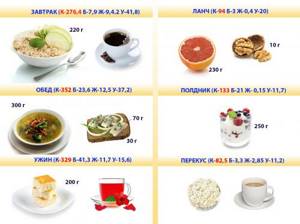
7.30 –220 g oatmeal cooked with low-fat milk. Add one grated apple and one teaspoon of cinnamon to the porridge. Coffee.
11.30 – half a grapefruit, walnut – 10 g.
14.30 – vegetable soup, one serving. 30 g rye bread with herring.
16.30 – yogurt with berries (can be fresh frozen).
18.30 – cottage cheese casserole – 200 g without sugar. To prepare, you need to take low-fat cottage cheese, kefir, egg, and oat bran. Bake like a regular casserole. Tea.
Just before bed – chicory with milk + slice.
Day 4 - 1300 Kcal (BJU - 109/20/170)
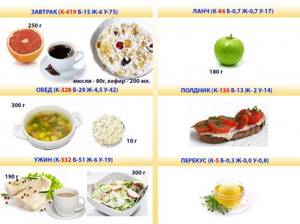
7.30 – 80 g of dry muesli diluted with kefir (200 ml). Half a grapefruit, black coffee or tea.
11.30 – green apple – 180 g.
14.30 – chicken breast soup: chicken fillet – 80 g, potatoes – 100 g, buckwheat – 25 g, green peas – 50 g, herbs – 15 g. One slice.
16.30 – 50 g of black bread with low-fat cottage cheese and one tomato.
18.30 – steamed white tilapia fish 190 g. Vegetable salad: tomato – 100 g, cucumber – 100 g, green peas – 50 g, radishes – 50 g, carrots – 50 g, greens – 15 g, season with yogurt – 60 ml.
Before bed - herbal tea. Do not add milk or sugar.
Day 5 – 1301 Kcal (BJU – 90/38/145)
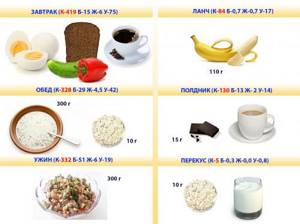
7.30 – 30 g of black bread, two boiled eggs, cucumber – 80 g, bell pepper – 145 g. Black coffee or tea, do not add sugar.
11.30 – banana – 110 g.
14.30 – buckwheat porridge with milk (without butter and sugar), you can add sugar. deputy — buckwheat — 50 g + 250 ml. milk. One slice.
16.30 – dark chocolate – 15 g, 250 ml. chicory with milk.
18.30 - Chicken liver salad: boiled liver - 130 g, tomato - 120 g, cucumber - 60 g, carrots - 40 g, greens - 15 g, garlic - 10 g, season with yogurt - 50 ml.
20.00 - kefir 1% fat + one slice.
Day 6 1305 Kcal (BJU - 108/22/164)
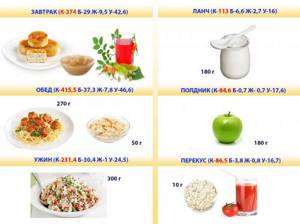
7.30 – cottage cheese pancakes: cottage cheese 2% fat – 100 g, oat bran – 20 g, egg – 1 pc. Fruit puree - 40g. Drink made from rose hips (or berries).
11.30 – natural low-fat yoghurt, 180 g.
14.30 – whole grain spaghetti – 50 g, 120 g chicken fillet meatballs (fillet + onion + egg). Sauerkraut - 50 g.
16.30 – apple – 180 g.
18.30 – tuna salad: tuna in its own juice – 110 g, brown rice – 30 g raw, tomato – 70 g, green peas – 50 g, season with yogurt – 50 g.
19.00 - tomato juice - 1 glass, one slice.
Day 7 - 1305 Kcal (BJU - 93/33/164)

7.30 – 220 g Oatmeal pancake with cottage cheese and banana (pancake: egg - 1 pc., oat bran - 20 g, oat flour - 20 g, kefir 1% - 40 g. Filling: cottage cheese up to 2% fat - 50 g, banana - 50 g.) Chicory with skim milk.
11.30 – grapefruit – 250 g, walnuts – 7 g.
14.30 – pearl barley porridge on water – 150 g, steamed tilapia – 100 g, greens – 20 g, carrots – 50 g,
16.30 – yogurt – 180 g, green apple – 180 g.
18.30 – omelet with mushrooms: egg – 2 pcs., assorted mushrooms – 50 g, tomato – 110 g, onion – 75 g.
19.00 - rosehip drink (or herbal tea).
Water, natural juice, mineral water, herbal tea can be consumed without restrictions. The only condition is one hour before a meal, or half an hour after a meal.
Useful tips
The diet, which requires 700 calories per day, is universal and has a rich menu, but despite the rave reviews of those losing weight, nutritionists recommend not only “sitting down” on it, but also going in for sports. People who lose weight on such a diet switch to light foods because they do not get enough and often overeat, so sports are the best help against overeating and for burning extra calories.
Try not to eat at a cafe while losing weight, where it is difficult to calculate the composition of a salad or soup and its calorie content.
The diet, which involves 700 calories per day, is simple and weight loss is not immediate, but gradually. On average, every fourth person losing weight who chooses such a menu can easily withstand 3-4 weeks. And every sixth person who loses weight using this method lasts 5–6 weeks, losing 5–15 kg of excess weight.
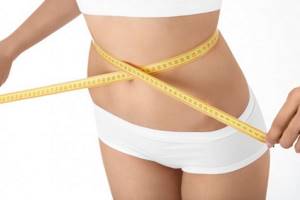
Such nutrition is effective, but sometimes people overestimate the body’s capabilities, counting the fewer calories, the faster the weight loss. The result is disastrous: a person goes hungry, then breaks down and gains more than the lost kilograms.
If you decide to lose additional weight by further reducing your calorie intake, it is recommended to do this only for 2 weeks, after which the removed calories are added to the next two weeks.
A sharp restriction of the diet exhausts the body both physically (dizziness, weakness appears) and morally (depression, apathy, psychosis, nervous breakdowns begin). Having “overdone” weight loss, people who quit the diet quickly become even more fat, since the body again accumulates all the sprinkled fats, fearing that it will not be allowed to eat anymore.

Snacks between meals in the form of protein foods (a piece of low-fat cheese, a few spoons of cottage cheese, half a glass of milk or kefir) will help to deceive feelings of hunger; boiled eggs or a piece of boiled meat fillet will help. An oatmeal breakfast will help you forget about food for a long time. It is slowly absorbed and saturates the body well, fighting off feelings of hunger. And if you can’t have a snack, then a glass of water will save you, as it will relieve excess appetite. After all, attacks of thirst are often confused with hunger. Another snack option would be fruit.
